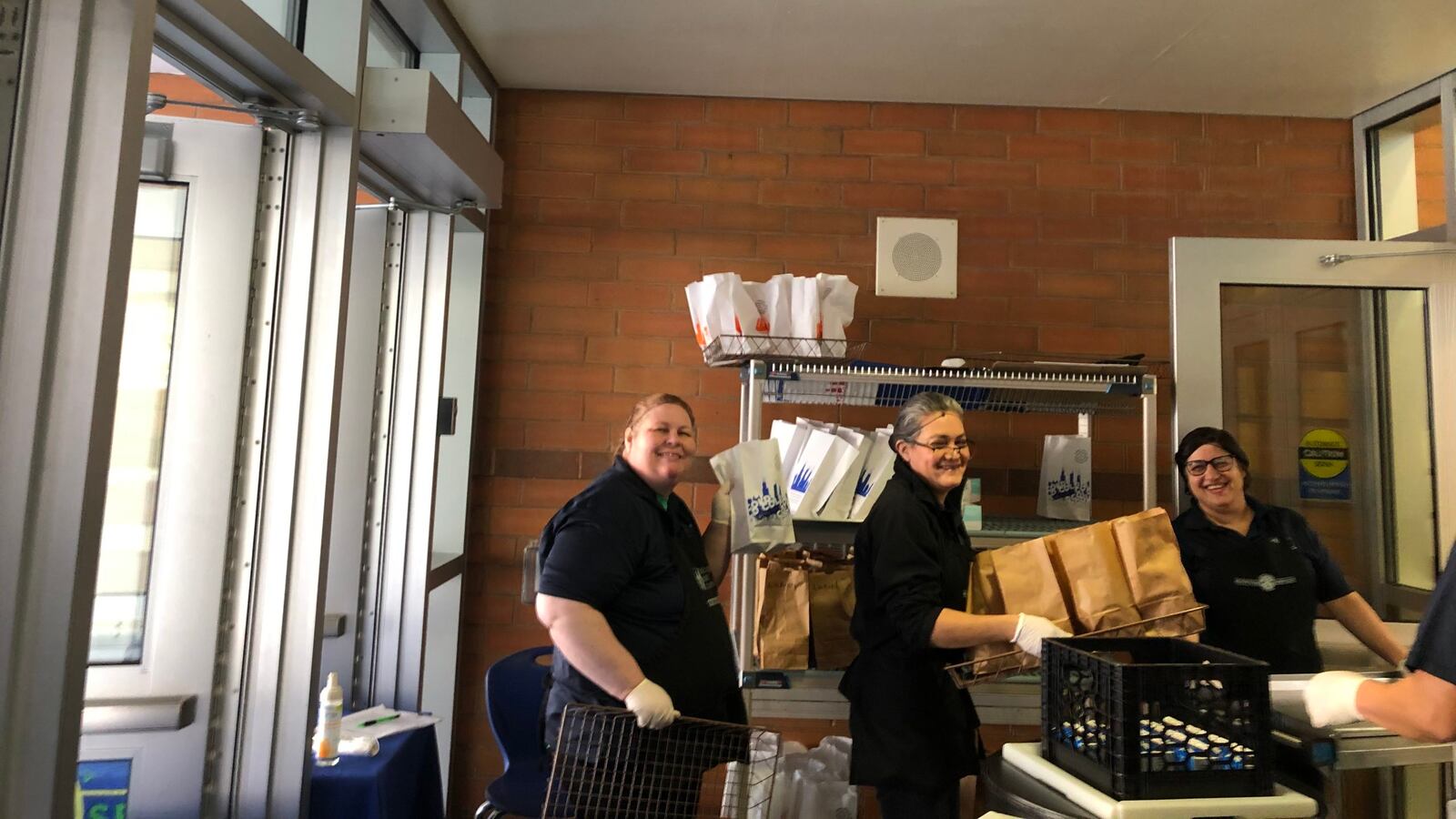Despite a steady drizzle of late-morning rain, the families still appeared Wednesday at Federico Garcia Lorca Elementary in Chicago’s Avondale neighborhood to pick up bags containing meals.
The bags were stuffed with cereal, sandwiches, granola bars — and families got three days’ worth. The day before had brought chicken patties that families could heat up later and sunbutter and jelly sandwiches. That day — the first of Illinois’ mandated schools closure, currently scheduled to extend through March 30 — the demand was so high that, when supply started to dwindle, Lorca’s principal went into the cafeteria, put on gloves, and began assembling sandwiches.
Fewer families picked up food on Wednesday than on Tuesday when two administrators, six lunchroom workers, and two school security personnel had handed out 961 meal packages, said Claudia Guerrero, the assistant principal. Each student received three days’ worth of breakfast and lunch.
Related: For live updates on coronavirus and Chicago schools, read our blog
Chicago is continuing to pay its staff during the closures. Janitors and hourly workers who attend the frontlines of food distribution get time-and-a-half pay; administrators get an extra 10%, the district has said.
Across Chicago, schools handed out 28,000 meal packages the first day of food distribution, and each package contained six meals. Currently, all district run schools are offering food distribution from 9 a.m. to 1 p.m. on weekdays, and 27 charters are also distribution sites. (Click here for a list.)
Whether Chicago Public Schools will keep up food distribution at every site or pivot to a scaled-down plan with fewer individual sites — akin to what it does in the summer — is an open question (the exception is Holmes Elementary, where distribution is on hold because of a hot water issue). A spokeswoman Wednesday said the district might adjust distribution as it sizes demand in the coming days.
Guerrero said she recognized some families who came to pick up meals. Others she didn’t. That was as intended.
“We’re serving all families in the area, not just our school families,” she said. “It’s a trying time, not just for our students but for the city as a whole, and we want to make sure that our community can see that the school and staff are here to support them.”
Lorca administrators also set up a table for families to pick up enrichment packets and hard copies of other schoolwork to take home for children. The discussion in education more broadly may be e-learning, but that has proved a challenge for large districts like Chicago, where students have disparate access to devices and reliable WiFi. Guerrero said at her predominantly Latino school, where 91% of students are low-income, not all children have access to the internet or have devices. Some rely mainly on their parents’ cellphones to access Google Classroom and the school website. Teachers were communicating with students as best they could, she said.
“Parents are still coming to get those packets,” she said, “because not everyone in our community has access to wi-fi at home.”
Mila Koumpilova contributed to this story.

